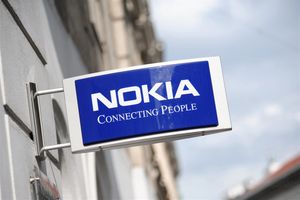Cities rarely sleep, yet their streets must turn before sunrise. Emergencies, festivals, and repairs demand instant redesigns that balance access, safety, and flow. Overnight conversions test how prepared a city truly is, turning curbs and lanes into flexible assets rather than fixed obstacles.
Adaptive tools now make those transformations predictable. Removable barriers, portable lights, and premarked anchor points let teams reshape corridors without chaos. Each operation becomes a real-time rehearsal in coordination, where timing and clarity decide success. The result is a city ready to adjust in hours instead of weeks.
Managing Overnight Street Changes Without Losing Control
Night crews move with precision when the map is clear. Each removable bollard, plate, and cone follows a practiced layout, turning curbside lanes into transit routes in minutes. Mapping high-impact zones and storing modular barriers nearby prevents last-minute scrambles and keeps morning traffic predictable.
Documenting each layout builds muscle memory. A photographed record and concise digital map make the next shift faster. Simple tools — labeled gear kits, numbered mounts, and quick-reference diagrams — cut confusion when deadlines close in. Coordination becomes habit, not reaction, creating calm in the middle of overnight change.
Setting Up Reliable Communication Between Departments
Radios crackle and screens pulse under floodlights as midnight crews sync their plans. A single command hub gathers maps, notes, contact lists, and live updates into one clear view. The lead coordinator tracks shifting routes, assigns rapid approvals, and gives the final nod before cones drop, keeping every team in step across agencies without wasted calls or delays. Coordinated timing turns what looks chaotic into a calm, visible rhythm of movement.
Short, purposeful check-ins replace long meetings once the work begins. Timestamped photos, quick radio summaries, and shared logs preserve clarity through the night. Clear channel names — Logistics, Traffic, Field — keep chatter lean and precise. Familiar voices, steady pacing, and predictable phrasing make coordination second nature, turning late-night adjustments into smooth, practiced teamwork that feels rehearsed rather than rushed.
Designing Streets That Can Adapt Without Rebuilding
A street designed to bend never breaks routine. Retractable curbs, recessed post sleeves, and LED lane strips let crews reshape routes without tearing up pavement. Modular panels and smart sensors make quick swaps possible, tracking wear and flow while allowing lanes to flex for bikes, buses, or barriers overnight. These adaptable surfaces form a living network that responds to need and crowd flow.
City specs that include anchor slots and conduit paths shorten any future change to hours. Standardized fittings keep suppliers interchangeable, preventing costly hold-ups when gear fails. Each resurfacing project becomes an investment in long-term agility. What once demanded a rebuild now takes one shift, letting daily life continue with almost no disruption and commuters hardly noticing the change.
Keeping Temporary Configurations Safe and Predictable
Visibility turns a late-night layout into a smooth route. Reflective barriers, portable lights, and guided arrow boards give drivers and pedestrians clear cues long before the shift appears. Equipment that locks firmly into place holds steady against wind and traffic, preventing the quiet drift that causes confusion.
Every installation should read like a language of safety. Predictable spacing, clean signage, and steady illumination tell the story of movement and protection. Supervisors walking the line can spot hazards early, correct spacing, and record improvements. Safety grows from familiarity, not luck, and each night refines the city’s rhythm.
Reviewing Each Change to Build Long-Term Efficiency
Morning debriefs turn last night’s effort into tomorrow’s improvement plan. Crew leads and dispatch log timing gaps, access issues, and small wins before fatigue blurs memory. Timestamped photos linked to map pins show exactly where cones, signs, and anchor plates stood, creating a visual record that guides faster setups and steadier responses on the next shift.
Compact checklists grow from those lessons. Quarterly gear checks cover batteries, anchor plates, and spare bollards, while updated packing lists prevent last-minute shortages. Each reviewed record adds clarity, turning routine notes into a foundation for smoother operations. Every photo, list, and comment builds readiness — turning repetition into sharper, safer, more confident work nights.
Cities gain agility through repetition and reflection. Each overnight change refines coordination, records new shortcuts, and exposes weak points worth fixing before the next call. Adaptive barriers, portable gear, and practiced crews transform chaos into managed motion that feels deliberate and calm. Consistent reviews turn scattered efforts into a refined playbook that cuts delays and confusion across departments. When lights flash and lanes shift, well-practiced teams move with quiet precision. True resilience grows from every small drill, each logged photo, and every smooth reconfiguration that keeps people moving safely before sunrise, turning repetition into lasting urban confidence and control.
Media Contact
Company Name: maxiforcebollards
Email: Send Email
Country: United States
Website: https://maxiforcebollards.com/







